Join us as we review Antoni Gaudí’s most emblematic works! It is one of the most well-known figures in world architecture and the greatest exponent of Catalan Modernism. His work is unique and visionary and marked an ante and an after in the history of art and architecture. Gaudí’s works are known worldwide because he fused organic forms with structural innovations and, always, inspired by nature.
At Barcino Designs we want to discover the main works of Antoni Gaudí, both the ones that are well known, as those that are less so. So, you can get an idea of the talent of this artist and architect who was quite a revolutionary in his time, and still is today!
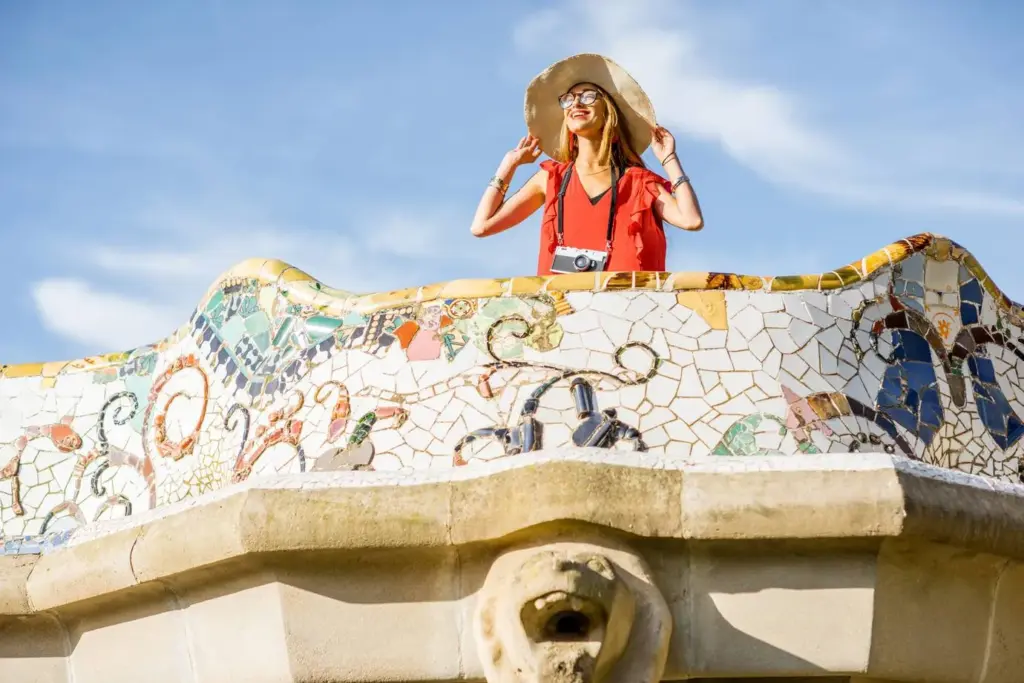
Antoni Gaudí and Catalan Modernism
Catalan Modernism found its greatest representative in Gaudí. While other modernist architects followed European influences such as Art Nouveau, Gaudí took the movement to another level: he developed his own style based on the observation of nature, the use of traditional materials combined with new construction techniques and an artistic vision that broke with the canons of the time.
One of the most characteristic elements of his work is the trencadís , a mosaic technique made with broken ceramic fragments that gave color, texture and dynamism to its constructions. This technique became a symbol of Catalan Modernism and one of the hallmarks of its architectural style.
Catalan Modernism reached its maximum expression with Gaudí’s creations, making it a universal reference.
Antoni Gaudí: most important works
We will start by talking about Gaudí’s most important works, revered and recognized throughout the world.
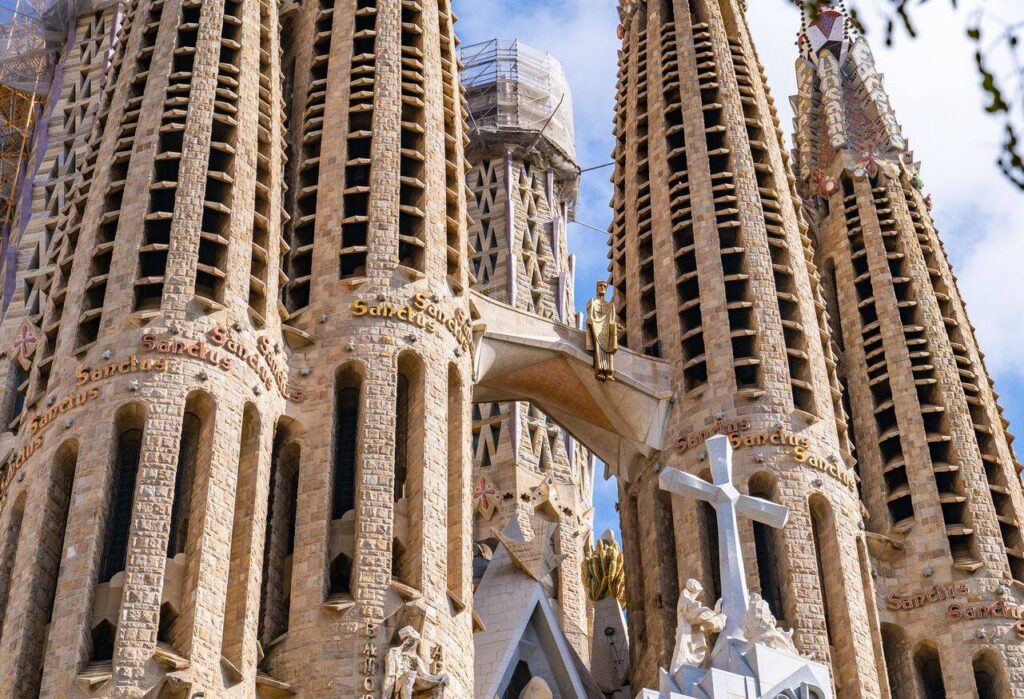
The Holy Family
The Sagrada Familia is Antoni Gaudí’s most ambitious work and the symbol of Barcelona. Begun in 1882, and still under construction, this basilica has a structure inspired by nature.
Each of its facades and towers is loaded with religious symbolism, and its interior is reminiscent of a forest with columns that imitate the structure of trees. Over the years, different architects have continued his legacy based on Gaudí’s original plans and models.
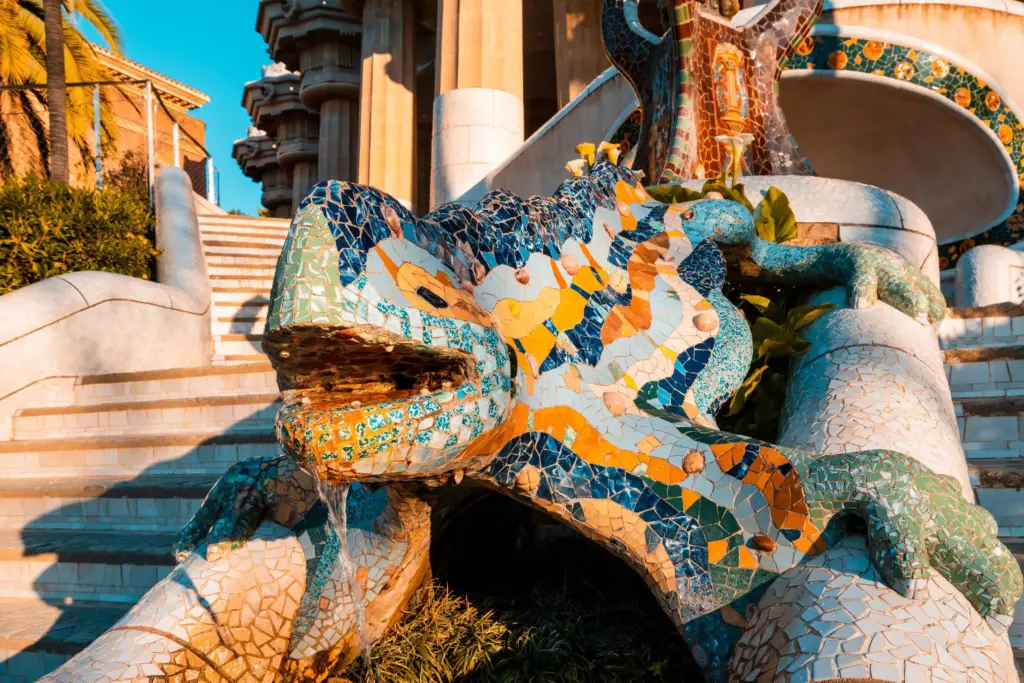
Park Güell
Designed between 1900 and 1914, Parc Güell is one of the most representative spaces of Gaudí’s style. At the beginning, it was built to be an urbanization for high society, but it ended up becoming a public park. The use of trencadís can be seen in the benches, columns and sculptures.
The modernist architecture of the park merges with nature. The result is a space full of wavy shapes, structures that imitate tree trunks and the famous staircase with the multi-colored salamander: the Parc Güell Dragon.
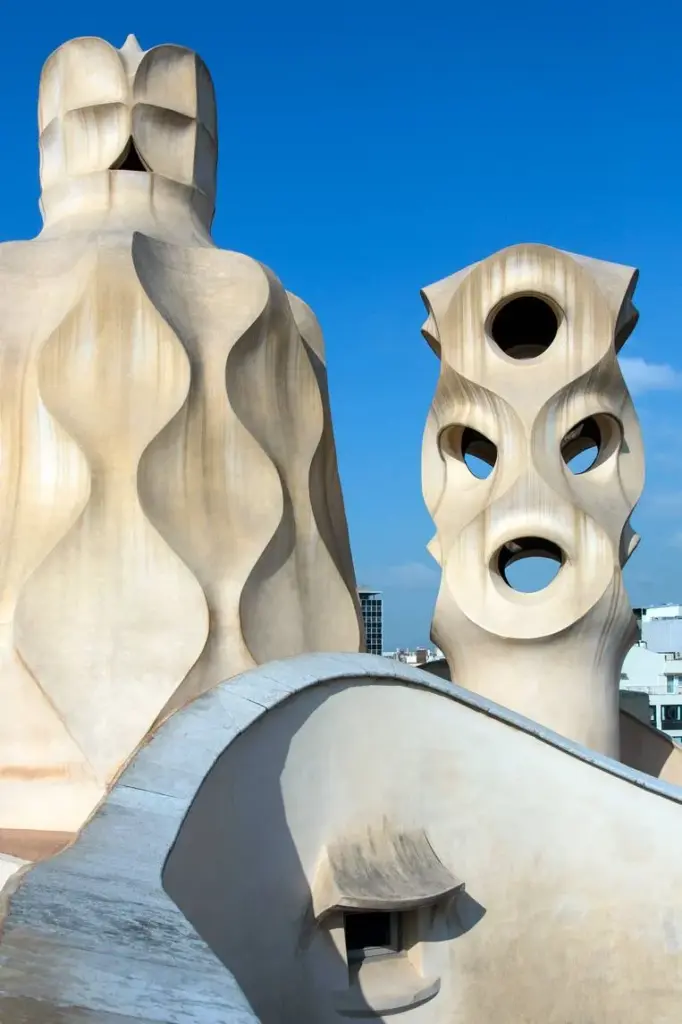
Casa Batlló
Casa Batlló is one of the masterpieces of Catalan modernism. Its design is inspired by nature and the legend of Sant Jordi, the patron saint of Catalonia. The facade recalls the skin of a dragon and is decorated with a trencadís .
In the interior, Gaudí eliminated right angles and designed a space full of shapes, undulations and spaces that take us into a magical world. Today it is a museum open to the public.

Casa Mila or La Pedrera
Built between 1906 and 1912, Casa Milà, better known as La Pedrera, is a building that was revolutionary for its structure without load-bearing walls. Its roof is one of its most surprising elements, with sculptural chimneys that look like petrified warriors and surreal shapes.
The undulating facade and its inspiration from nature make this house considered one of Gaudí’s most innovative works.
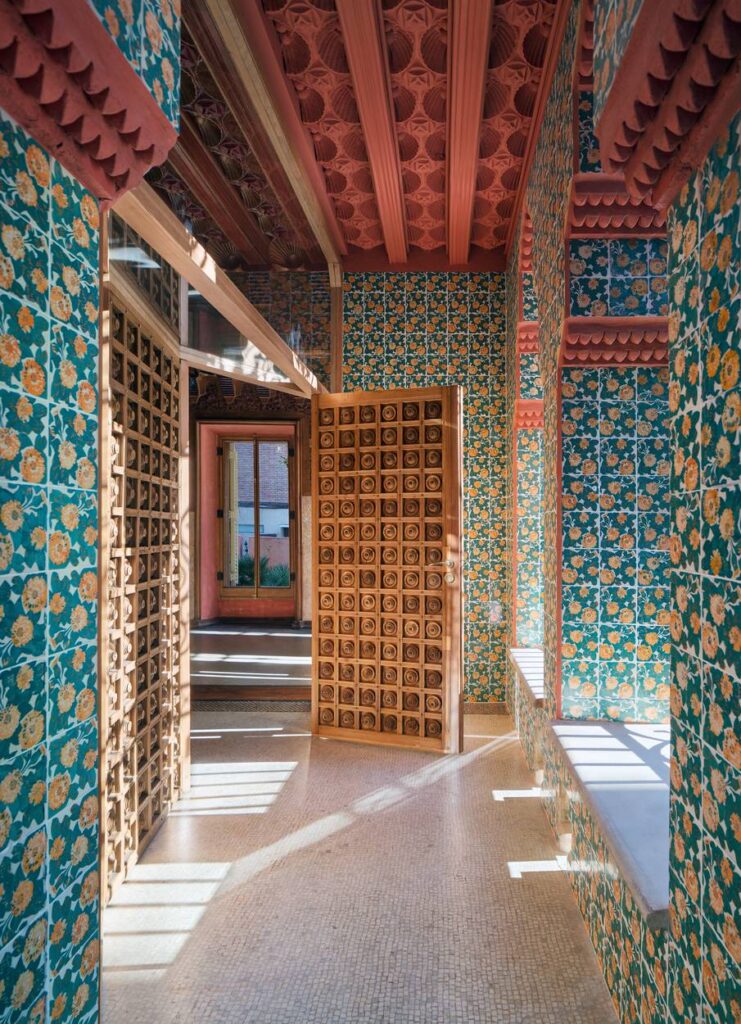
Vicens House
Casa Vicens was built between 1883 and 1885, so this is Gaudí’s first house. It is distinguished by its neomudéjar style with oriental influences and the use of decorative ceramics on the facade.
This work marks the beginning of his foray into modernism. Currently, Casa Vicens is a museum that allows you to learn about the architect’s first steps in his career.
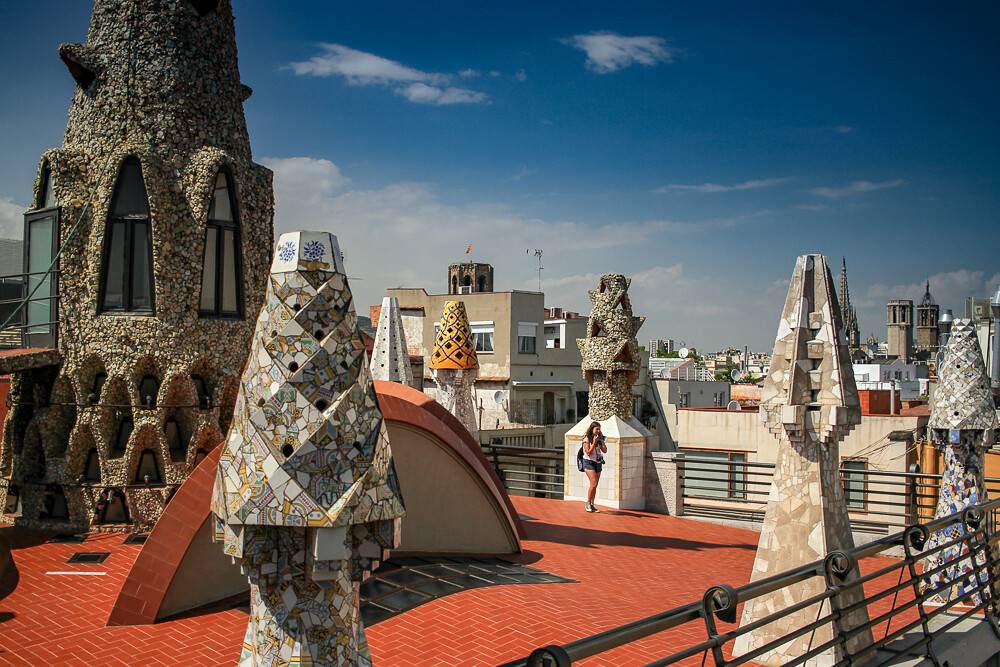
Palace Güell
Palacio Güell is one of Antoni Gaudí’s buildings built between 1886 and 1888 for Eusebi Güell and it is one of the first collaborations between the architect and his patron. Designed as a luxury urban residence, Palacio Güell combines stone, wrought iron and broken tiles.
Its interior has a central room with a dome that allows the entry of light and achieves a spectacular lighting game. Its roof is decorated with chimneys of unique shapes and colors that remind us of the ones we see in La Pedrera.
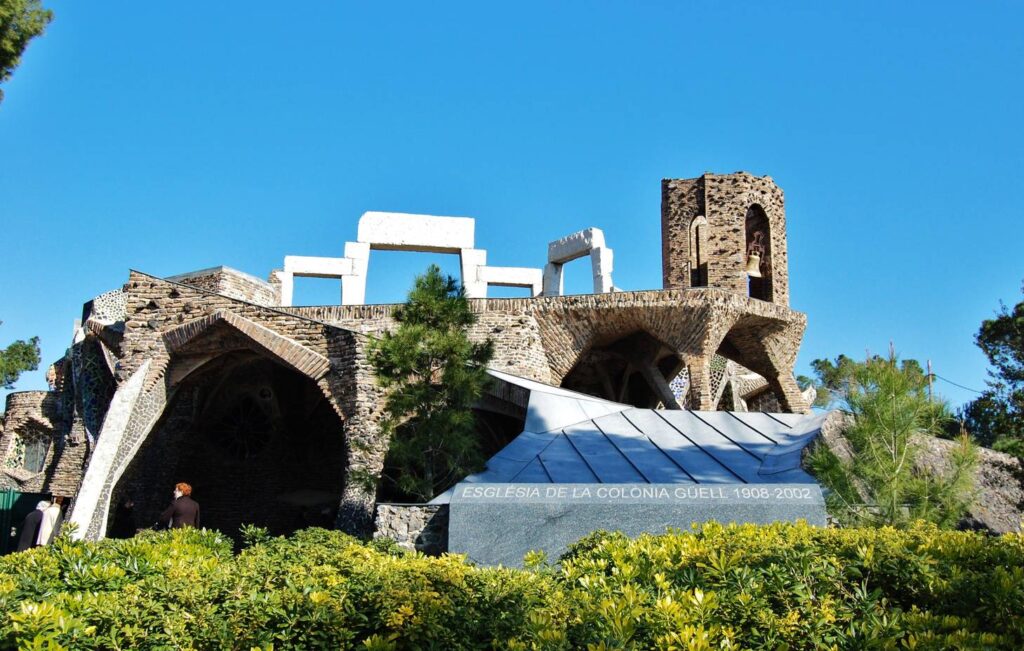
Colonia Güell and its crypt
Colonia Güell was one of Gaudí’s most ambitious constructions, as he wanted to create a self-sufficient industrial community on the outskirts of Barcelona. Within this complex, the crypt of the church is one of the clearest examples of its architecture.
Gaudí anticipated many of the techniques he would later apply in the Sagrada Familia. Although the church never ended completely, the crypt is considered a masterpiece of modernism and a testing laboratory.
Gaudí’s lesser-known works
Although Antoni Gaudí is recognized for his most emblematic works in Barcelona, the architect also participated in lesser-known projects. These architectural works of Gaudí are outside Barcelona and show different facets of his artistic evolution.
- El Capricho (Comillas, Cantabria). It is one of Antoni Gaudí’s main works outside Catalonia. Its design is characterized by an elongated structure and an oriental-inspired tower covered with ceramic in green and yellow tones.
- The Botines House (León). Designed in 1891, Casa Botines is one of Gaudí’s few works in Castilla y León. Its facade is reminiscent of a medieval castle, with pointed towers and a large central window. Currently, Casa Botines is a museum dedicated to Gaudí’s work.
- The Episcopal Palace of Astorga (León). Another of the commissions that Gaudí received outside of Catalonia was the design of the Episcopal Palace of Astorga in 1889. Although Gaudí abandoned the project before its completion due to disagreements with the bishopric, his footprint was reflected in the original structure and design.
- The gardens of Artigas (La Pobla de Lillet, Barcelona). These gardens are an example of the concept of architecture integrated into nature that Gaudí developed in Park Güell. They were a gift from Gaudí to the Artigas family as a thank you for their hospitality. In them, you can find stone walkways, undulating benches and fountains decorated with Gaudí’s trencadís mosaic technique.
Discover Gaudí’s sculptures
In the works of Antoni Gaudí we can find sculptural elements that decorate and reinforce the narrative of his projects.
A clear example of Gaudí’s sculptures can be seen in the Sagrada Familia, where the facades are adorned with biblical scenes carved in stone:
- The Fachada del Nacimiento, made during Gaudí’s lifetime, is full of detailed figures representing nature and the birth of Christ.
- The Passion Facade , designed according to his sketches and completed later, presents more expressive forms that convey the drama of the crucifixion.

Gaudí’s trencadís
One of the most characteristic features of Gaudí’s style is the use of trencadís . It is a mosaic technique created from broken ceramic fragments that are glued together to form surprising patterns and textures.
- Park Güell is a clear example of the use of trencadís , especially in the famous dragon that decorates the main staircase and in the undulating benches in the central square.
- At Casa Batlló, the facade is covered with trencadís that simulates dragon scales.
- In the Sagrada Familia, Gaudí also used this technique to bring color and dynamism to his towers.
With the trencadís technique, Gaudí took advantage of the remains of factory ceramics and tiles, and gave them a new life within his architecture. This technique is still one of the main hallmarks of Catalan modernism today.
Gaudí and painting
Although Gaudí was primarily an architect, his relationship with painting was fundamental in his creative process. He was not a painter in the traditional sense, but he was a great observer of color, light and composition.
The influence of painting on Gaudí is evident in the way he used color in his works. Through the trencadís and the polychrome stained glass windows of the Sagrada Familia, he achieved light and color effects similar to those of an impressionist painting.
For Gaudí, architecture had to excite , and that’s why he used the principles of painting to create spaces full of nuances and contrasts.
The importance of Gaudí in the world of art and architecture
Gaudí’s importance in the world of art was thanks to his innovative approach, his ability to integrate different artistic disciplines and his unique vision of architecture. Currently, it is a world benchmark.
One of the major recognitions of his work has been the declaration of 7 of his creations as World Heritage by UNESCO, in 1984 and 2005. These include Park Güell, Palacio Güell, Casa Milà, Casa Vicens, the Sagrada Familia (crypt and nativity facade), Casa Batlló and the crypt of Colonia Güell.
His influence can be seen today in architects such as Frank Gehry, Santiago Calatrava and Zaha Hadid who have cited Gaudí as one of their main inspirations.
Beyond architecture, Gaudí’s impact can also be felt in art, design and popular culture. At Barcino Designs, for example, we were inspired by Gaudí and the trencadís to create our decorative figures and thus pay tribute to this Catalan genius.

